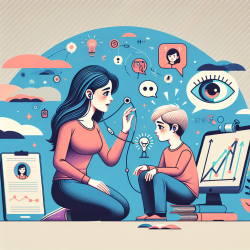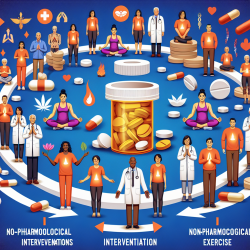In the rapidly evolving field of online therapy, ensuring the safety of our clients—particularly children in special education—is paramount. As Speech Language Pathologists (SLPs), it is our duty to create a secure, effective, and nurturing environment where our clients can thrive. This blog aims to provide a comprehensive guide on best practices for maintaining safety in online therapy sessions.
Understanding the Importance of Safety
Safety in online therapy encompasses several dimensions: emotional, physical, and digital. For children and those in special education, these aspects are even more critical. Emotional safety ensures that the client feels secure and supported, while physical safety involves the prevention of any harm during the session. Digital safety pertains to protecting the client's personal information and ensuring secure communication channels.
Emotional Safety
Creating an emotionally safe environment involves:
- Building Trust: Establishing a rapport with the child and their caregivers is crucial. Trust is the foundation of any therapeutic relationship and is built through consistent, empathetic, and transparent communication.
- Active Listening: Always listen to the child's concerns and feelings. Validate their emotions and provide reassurance when needed.
- Setting Boundaries: Clearly define the boundaries of the therapy sessions, including what is and isn't appropriate behavior. This helps in creating a predictable and safe environment.
Physical Safety
Even though therapy is conducted online, physical safety should not be overlooked:
- Parental Supervision: Encourage the presence of a parent or caregiver during the session. This ensures that the child is in a safe environment and can help manage any unexpected situations.
- Safe Environment: Advise caregivers to set up the therapy space in a quiet, comfortable, and distraction-free area. Ensure that the equipment used (e.g., computer, headphones) is safe and functioning properly.
- Emergency Protocols: Have a clear plan in place for emergencies. Ensure that caregivers are aware of what to do if the child becomes distressed or if there is a technical issue.
Digital Safety
Digital safety is crucial in protecting the client's personal information and ensuring secure communication:
- Secure Platforms: Use therapy platforms that are compliant with data protection regulations (e.g., HIPAA). These platforms should offer end-to-end encryption to protect the privacy of the sessions.
- Confidentiality Agreements: Ensure that both the therapist and the client (or their caregiver) understand and agree to confidentiality protocols. This includes not sharing session details or recording sessions without consent.
- Regular Updates: Keep all software and devices updated to protect against security vulnerabilities. Regularly review and update your digital safety practices.
Best Practices for Speech Language Pathologists
To maintain a high standard of safety in online therapy, SLPs should adhere to the following best practices:
- Continuous Education: Stay updated with the latest developments in online therapy and safety protocols. Attend workshops, webinars, and courses to enhance your knowledge and skills.
- Professional Support: Join professional networks and communities where you can share experiences and gain insights from fellow SLPs. This support system can be invaluable in navigating challenges and improving your practice.
- Documentation: Maintain detailed records of each session, including any safety concerns and the steps taken to address them. This documentation can be crucial for accountability and continuous improvement.
Conclusion
Ensuring safety in online therapy is a multifaceted responsibility that requires vigilance, empathy, and continuous learning. By prioritizing emotional, physical, and digital safety, Speech Language Pathologists can create a secure and supportive environment for their clients, helping them to achieve their full potential.
At TinyEYE, we are committed to providing safe and effective online therapy services to schools. We understand the unique challenges faced by children in special education and strive to create an environment where they can feel secure and supported.










